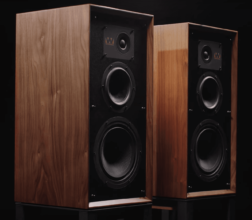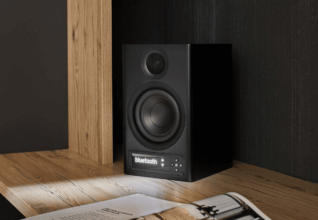MARTEN OSCAR DUO Review
Seems like a strange name for a pair of loudspeakers, doesn’t it? But it makes perfect sense once you know that all the speakers built by Swedish company Marten are named after jazz musicians. This model was named in honour of Canadian jazz pianist Oscar Peterson though funnily enough, only his mother called him Oscar. He was ‘O.P.’ to his friends. Marten O.P. Duo would have worked.
Marten names its speakers after jazz musicians because the three brothers who own the company, Jorgen, Leif and Lars, are all musicians, (drums, bass guitar and composer, respectively) and all are jazz enthusiasts. Their surname isn’t Marten though. It’s Olofsson. The company takes its name from Leif’s middle name, which is Marten, because he was the founder.
Given this background, you won’t be surprised to learn that Marten doesn’t only make loudspeakers. Its factory in Gothenburg also has a fully equipped recording studio and regularly releases recordings on CD, LP, and as digital downloads. It also makes cables.
As for the ‘Duo’ in the title, that’s because this new design is a two-driver, two-way design. And despite the fact that its price tag runs to five figures, it’s Marten’s lowest-priced model.
THE EQUIPMENT
A common thread that runs through all Marten designs is the use of ceramic-coned (and domed) drivers, which it designs but has made for it either by German manufacturer Accuton or by Indonesian manufacturer SB Acoustics (a company owned by Sinar Baja Electric). In fact it was Leif’s discovery of the ceramic drivers made by Accuton that inspired him to create a company (originally named Marten Audio) to build loudspeakers. Prior to establishing it he was working as an electrical engineer — speaker building was just a hobby.
After using Accuton’s ceramic drivers in his designs for the first time, he realised that he was building better-sounding loudspeakers than were commercially available at the time (1998). “The rigid pure ceramic cones produced a cleaner, totally transparent sound,” he said. “I heard more detail in recordings than ever before, accompanied by greater natural dynamics and extreme speed.” In addition to having its drivers made in Germany and Indonesia, Marten also designs drivers that it has made for it in neighbouring Norway, by SEAS.
Accuton developed its first ceramic driver only two years prior to Leif founding Marten, as the end result of a research project trying to find a cone material that was very light, very stiff and had high internal damping, requirements are mutually contradictory.
They eventually hit upon a process that converted aluminium (Al) to alumina (Al2O3) which is known in the trade as a ‘hard ceramic’. The process involves oxidising thin aluminium foil which converts it to alpha-corundum, after which it is then thermoformed into a conical profile after which it’s anodised using a special heat treatment. This process turns the light silvery pure aluminium into brittle, largely amorphous aluminium oxide that’s light grey in colour. The resulting cone is then heated to 1,450° C, which rearranges the Al2O3 molecules, a process that increases the volume of the cone by 7 per cent. The end product is a cone with a snow-white colour that is so hard that it can only be cut with a CO2 laser.
Properly damped ceramic cone drivers have a better impulse response and significantly reduced distortion (both THD and IMD) than conventional paper and polypropylene cones, as well as a more linear response across their rated bandwidth.
As you’ve probably guessed, ceramic cones are expensive to make. By way of example, if you were looking to buy a 178mm driver with a paper cone, a very high-quality one from a reputable Danish manufacturer would cost you around $ (Scan-Speak 18M/4631T Revelator) whereas the same-sized driver with a ceramic cone from a German manufacturer would cost you almost $ (Accuton C168-6-990).
Although Marten rates the Oscar Duo’s bass driver with a diameter of 7-inches (177.8mm), the ceramic-coned SB-Acoustics bass/midrange driver is actually only 171mm in diameter overall, with a cone diameter of just 110mm. But the important dimension is the Thiele/Small diameter (the distance across the cone between the apexes of the roll surround) as this is what gives the effective cone area (Sd) that largely dictates how much bass the cone can produce. This measurement is 122mm for an Sd of 118cm2.
The tweeter in the Oscar Duo is also made by SB Acoustics in Indonesia and has a 25mm diameter ceramic dome and a neodymium magnet. The fact that the tweeter’s dome is made from the same material as the bass/midrange driver’s cone is important because the tonal quality of a driver is largely dictated by the material used for its diaphragm. A driver will ‘sound’ completely different depending on what its diaphragm is made from: paper, plastic, cloth, metal, Kevlar, diamond, Beryllium etc.
Despite this fact, almost all loudspeaker manufacturers use different materials for their tweeter diaphragms than they do for their bass/midrange diaphragms. Because of this, the tonal quality of the tweeter cannot be the same as the tonal quality of the bass/midrange driver… with the obvious sonic consequences.
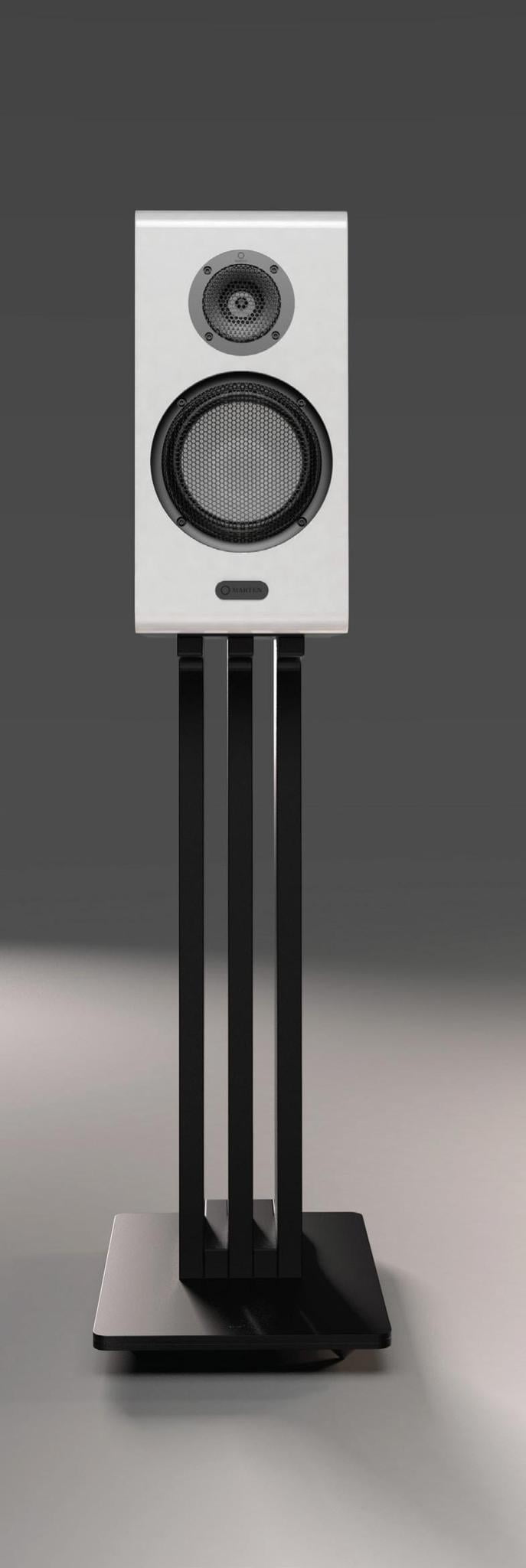
“We’d have to say that ceramic cones and domes obviously have a definite advantage over softer cone and dome materials
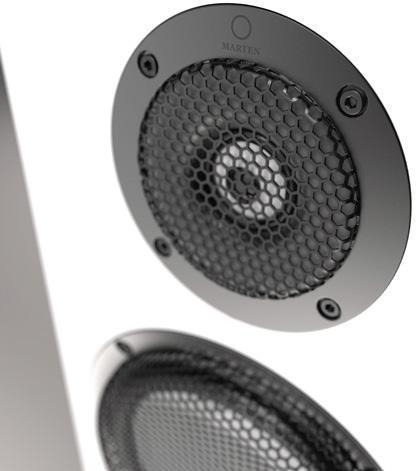
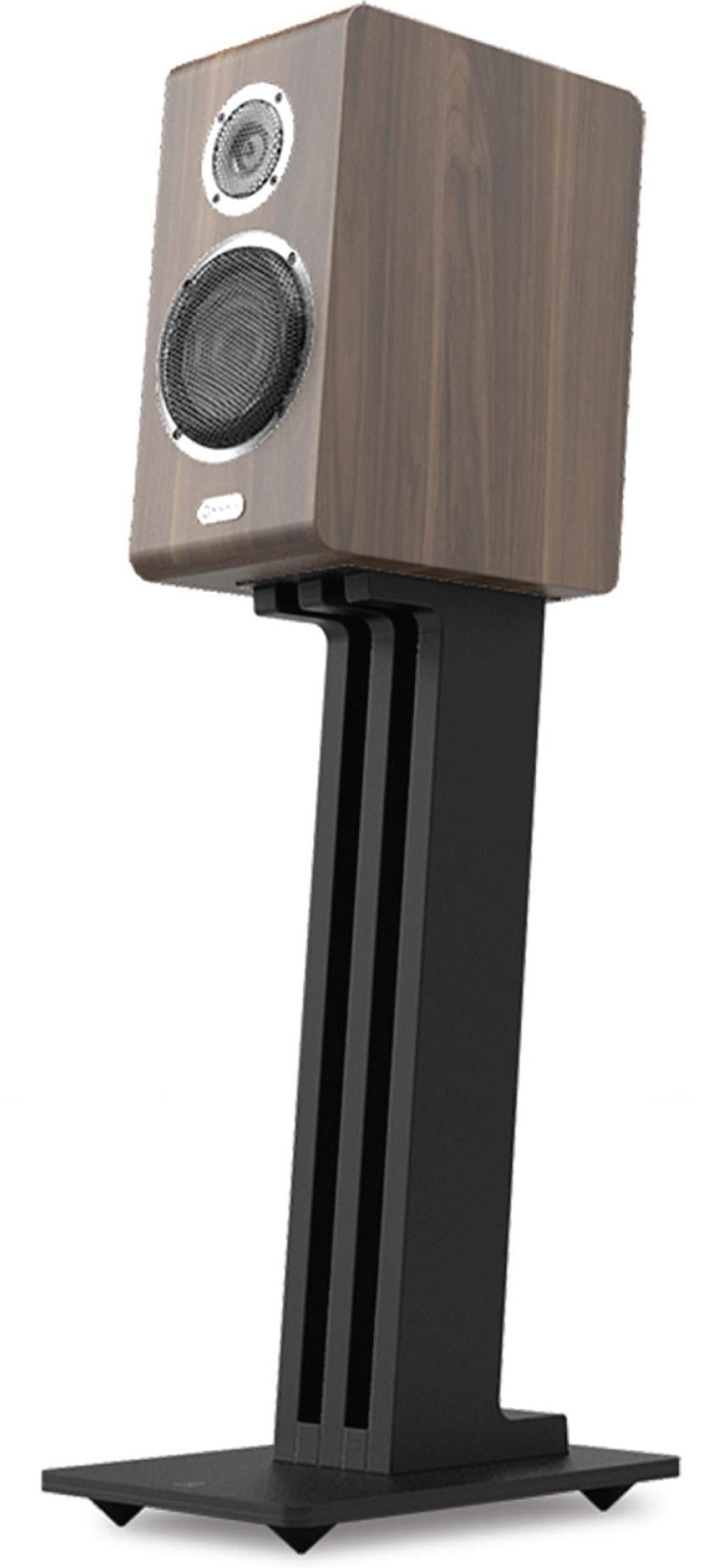
By using the same ceramic material in both drivers, Marten ensures the tonal quality will be uniform right across the audio band, from the lowest bass right up to the extreme treble.
The crossover frequency between the bass/midrange driver and the tweeter is nominally 2.5kHz and is accomplished via a ‘second order’ network of capacitors, resistors and inductors. In the network inside the Oscar Duo, which is all hand-soldered and hard-wired, there are two capacitors from German specialist Mundorf (one Evo MCap Aluminium and one Evo MCap Aluminium Oil), and an Audyn Plus capacitor from German specialist Intertechnik. One of the network’s three inductors is a special type wound with copper foil, instead of the more usual copper wire that is used in the other two inductors, along with a couple of wire-wound resistors. As for why the crossover is second-order rather than third-or fourth-order, Leif says “We prefer to use lower-order crossovers, as the higher-order crossovers tend to limit the dynamics and details. Our second-order crossover has been creatively designed to make the best of the dynamic range.”
The ‘order’ of a crossover simply describes how sharply it rolls off frequencies above (and/or below) a certain frequency. A firstorder crossover rolls off at 6dB per octave. A second-order crossover rolls off at 12dB per octave. A third-order crossover rolls off at 18dB per octave. This means that for a second order crossover, every time the frequency of the audio signal is changed by a factor of two (one octave), the level of the audio signal will change by 12dB. Using a crossover protects the tweeter from being damaged from lowfrequency energy and prevents high frequencies leaking into the bass/midrange driver.
Around the rear of the Oscar Duo is a bass reflex port that is 50mm in diameter and 185mm deep. Both its ingress and its egress are flared using plastic flares.
Below this port is a single set of WBT’s ‘NextGen’ speaker terminals, mounted on a small plate. These terminals are cleverly designed so they incorporate both the binding post and a rotating collar than enables the terminals to get a firm grip on whatever type of connector you use, or even on bare wire.
Marten makes much of the fact that it uses Jorma Design cabling inside all its speakers, including the Oscar Duo reviewed here. To illustrate what we mean, here’s a quote from Marten: “We use Jorma Design internal wiring for its exemplary quality and performance.
Handmade in Sweden, the cables use separate + and – for enhanced shielding and the highest quality copper.
This offers natural, transparent sound; the perfect choice for our speakers. Cables are integral components, so they must work harmoniously with our precision design and build. Jorma Design delivers exactly what a Marten speaker demands.”
What the brochure doesn’t tell you is that Marten owns Jorma Design. When you know that, you might be tempted to think that it would be hardly surprising to use the cables you make yourself in your own loudspeakers. However, all is not what it seems, because Marten was using Jorma Design cable exclusively in its speakers long before it purchased the company. Indeed we suspect Marten purchased Jorma Designs only in order to ensure continued supply of its preferred cables.
Marten promotes the Oscar Duo design with the clever catchphrase ‘The speaker bookshelves were designed for’ which suggests that the company does indeed intend that they be used in this location, but at the same time it has also designed a set of stands specifically for them, which would seem a bit contradictory. Says Leif: “To ensure the stand would work perfectly with Oscar Duo, we designed it ourselves — with as much consideration to resonance as to form. It had to be rigid enough to deal with vibrations, but also look good. After many iterations, we settled on a triple pillar design: making the overall appearance lighter, while keeping it stable.” These stands, however, are an optional extra, which retail for $ per pair (matte black).
You may be able to see from the photographs that Marten has eschewed the use of conventional fabric grilles and instead provided separate black circular (non-removable) metal grilles to protect both drivers. If, like us, you’re not a fan of the way they look, the good news is that Marten can supply conventional grilles that attach magnetically and hide the metal grilles. These retail for $ per set (black).
The Marten is available in two painted finishes (black gloss and white gloss) and one wood veneer finish. We were supplied the veneer finish, which is described as ‘Matte Walnut’. The cabinet’s top and bottom front and rear edges are formed into smooth curves; all other joints are at 90 degrees.
On both left and right speakers, the grain in the veneer on the top of the speaker was not matched to either the grain in the veneer on the front baffle or that of the rear, where both curve to meet the top of the speaker. The matching obviously depends on the veneer that’s available at the time of manufacture, so it will be different for every different speaker. If grain-matching is important to you, you will need to inspect the finish on the specific pair you’re buying, or select one of the painted finishes.
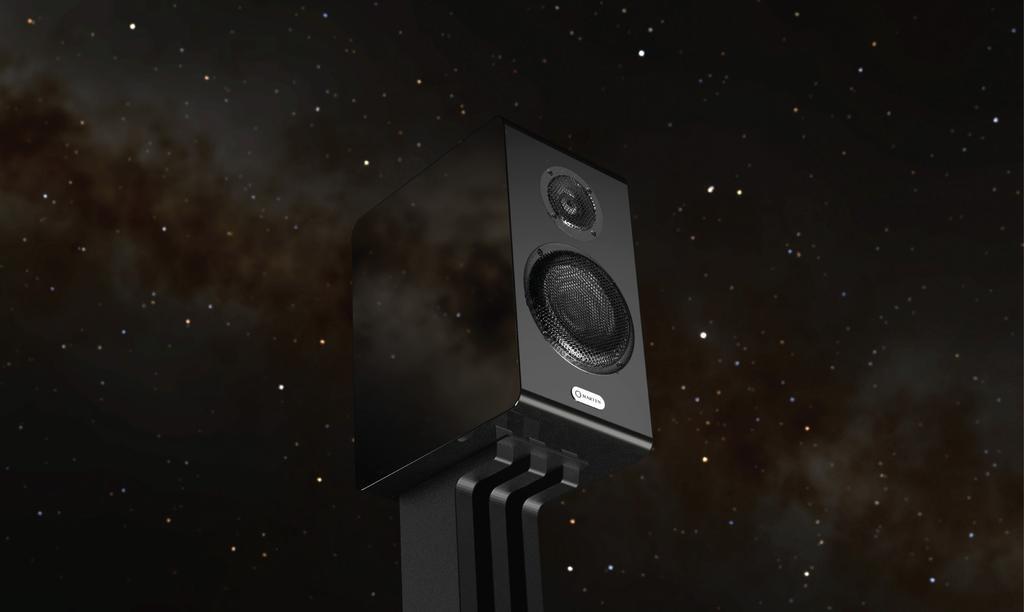
“The midrange sound has an airiness and a transparency that breathed life into everything we played
LISTENING SESSIONS
The Oscar Duo’s bass drivers are small — and even smaller than claimed by Marten, as we stated earlier — and they’re in small cabinets, so we rather expected that they’d obey Hofman’s immutable ‘Iron Law’ in terms of their ability to deliver deep bass. This law revolves around the fact that in an ideal world, a loudspeaker should have three attributes, these being extended bass response, high efficiency, and a small enclosure. Or in other words, a speaker with good bass that plays really loud and is small. Hofman’s ‘Iron Law’ says you can optimise any two, but only at the expense of the third. (It’s now better known as the ‘Pick Any Two’ principle.)
Hofman (1924–2010) was Josef Anton ‘Tony’ Hofmann, a solid-state research physicist who worked on the Manhattan Project in Los Alamos during WW2 and helped found Acoustic Research, Advent and KLH (he was the ‘H’ in that company’s name). In his spare time Hofman was an enthusiastic collector of Peanuts memorabilia, and a big fan of the character Snoopy. He was the eldest son of the internationally renowned concert pianist and composer Josef Hofmann.
The bass that we heard issuing from the Oscar Duos indicated to us that Marten might not have broken the Iron Law, but had certainly found a way to bend it to their (and our) advantage, because we were hearing bass extension and volume levels that belied the size of the cabinets. The speakers had no problems playing recordings with the notes in the lowest octave of the piano keyboard, and were outstandingly good when reproducing recordings that employed the lowest string on the double bass — even when played open — and delivered the impact of kick drums with satisfying authority.
Dire Strait’s Sultans of Swing (from ‘Dire Straits’) has an excellent—and excellently recorded — bass line that will immediately demonstrate the low-frequency capabilities of the Marten Oscar Duos. Listen to the lovely ‘stringy’ sound of John Illsley’s bass guitar and to the way you don’t have to struggle to hear whether he’s playing an octave, and the way the Oscar Duos don’t ‘double’ the fundamental to give a false impression of deep bass… they’re really delivering deep bass.
Listen too to the sound of ‘Pick’ Withers’ drum kit and additional percussion, such as on the intro to Water of Love. Withers’ light touch on his kit means you can also hear the clean delivery of his snare drum and the delicious sound of his hi-hat very easily. The Oscar Duos are very revealing of the unwanted sounds of guitar fretting, but this is the type of detail you expect to hear from good loudspeakers. Six Blade Knife is another great demo track to show off the low frequency capabilities of the Oscar Duos, but also listen to the way they deliver the signature sound of Knoffler’s guitar.

Then there’s the fact that very, very few speakers can deliver an authentic sound-field when playing pretty much anything by Metallica. So take a listen to The God That Failed (or pretty much any other track from the band’s self-titled album) and you’ll instantly hear that the Marten Oscar Dos are one of those select few.
Midrange is very difficult for two-way loudspeakers to deliver with clarity and balance, because the low-frequency driver is having to deliver both the bass frequencies and the midrange at the same time, so one will inevitably influence the delivery of the other, generally always to the detriment of the mids, but from our auditioning sessions, we’d have to say that ceramic cones obviously have a definite advantage over softer materials, because the midrange sound we heard was excellent and particularly notable for not sounding ‘flat’ … and we don’t mean flat as in frequency response, we mean flat as in ‘uninspiring’. The midrange sound of the Oscar Duos has an airiness and a transparency that breathed life into everything we played through them.
If you haven’t heard Celeste’s (Ms Celeste Epiphany Waite) long-delayed debut album, ‘Not Your Muse’ (which rocketed to the top of the albums chart in her home market of the UK), using it to audition the Marten Oscar Duos would be a sensible move. Her distinctively breathy contralto voice, with its characteristic lispy accented delivery, was projected towards our listening position with unerring accurate tonality, no matter where she was singing in her range or beyond it.
We knew we were in for the long haul just from the opening bars of the opening track, Ideal Woman, which starts off simply with her and a guitar. The detailing of the sonic qualities by the Oscar Duos is impressive. We could hear everything… and we mean everything! By the time you get to the stomping, up-tempo and totally jazzy Stop This Flame, which was released as a single back in 2020, you’ll be impressed by the Martens even more, and not only by the sound of the keyboards (real and electronic) but also by the enormous soundfield the Oscar Duos are able to create in your room.
Again, the Oscar Duos are so revealing that you can hear the ‘electronic-ness’ of the synthesised sounds… and on which, we must say, we think Celeste relies rather too heavily (though this would seem to be a decision by her collaborator and producer Jamie Hartman, rather than her. Just think of how much money you save when you don’t have to pay other musicians for ‘bass programming, guitar, Mellotron, organ, percussion, piano, recording engineer, strings, synthesizer’, all of which he takes credit for.)
We never thought we’d be recommending you listen to Alice Cooper to evaluate high-frequencies, but we are… specifically his latest, greatest and hugely hilarious album ‘Detroit Stories’. The sizzling cymbals, the screaming guitar, the high-pitched background percussion, you’ll hear it all through the Oscar Duos. And listen to the clarity of the enunciation — there’s absolutely no blurring of sibilants. The speed of the drum sound on Rock & Roll (yep, it’s a Lou Reed cover) is incredible. And if you don’t fall out of your listening chair listening to Cooper’s cover of Outrageous Cherry’s Our Love Will Change the World, we’ll definitely owe you one. (Cooper’s covers of songs by Bob Seger and MC5 are equally good). This is an album that should be in every old rocker’s collection!
CONCLUSION
During the course of the review process, we fell to wondering how Marten got around that immutable ‘Iron Law’ until we recalled an old US car racing aphorism, “the only thing faster than cubic inches is rectangular dollars”, meaning that if you have a small-capacity engine, the only thing that’s going to make it go faster than a big one is by spending money to soup it up. Which is exactly how Marten has built its Oscar Duos. Extracting such high levels of performance from such a small speaker is not without its costs!
SPECIFICATIONS
Marten Oscar Duo
Frequency Response: 37Hz–20kHz±3dB
Sensitivity: 86dBSPL/1m/2.83V
Nominal Impedance: 6Ω
Minimum Impedance: 3.1Ω
Crossover Frequency: 2.5kHz (second-order)
Speaker Terminals: WBT Nextgen
Internal Wiring: Jorma Design
Cabinet Finishes: Matte Walnut, Piano Black, Piano White
Dimensions (WHD): 200×400×320mm
Weight: 13kg
Contact: Absolute Hi End
(04) 8877 7999






